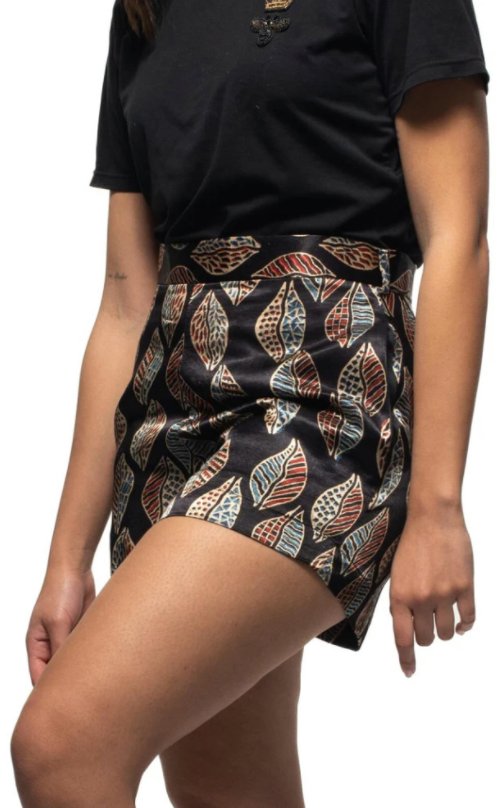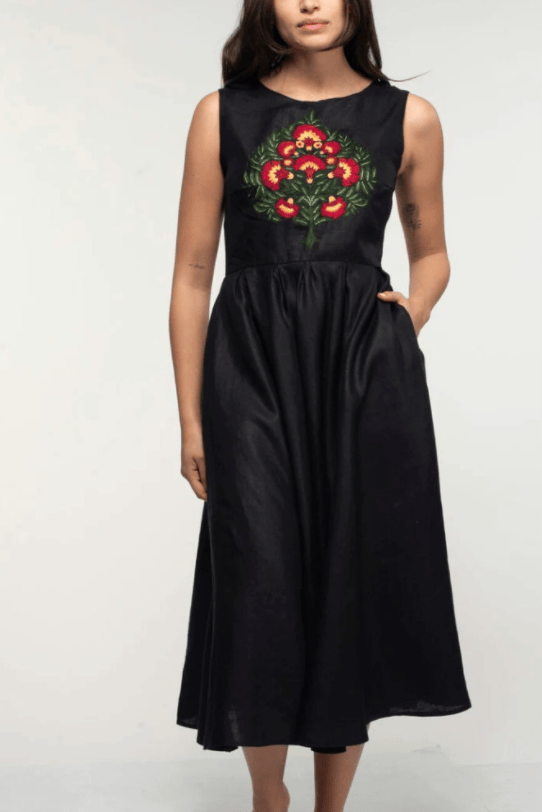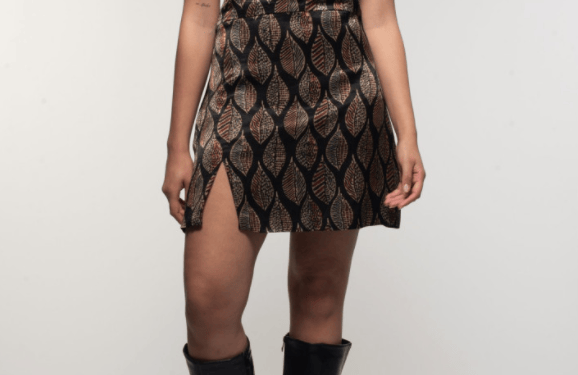The planet is in dire need of eco-responsible fashion brands. As more consumers are becoming aware and distrusting of fast fashion companies, the newest movement within the industry centers around sustainability, from design to production and packaging.
Kurinji, an eco-conscious clothing brand for women, has embraced an environmentally respectful business model by creating handmade, upcycled clothing of the highest quality.
Impakter Eco has already added Kurinji’s products to our marketplace, but we spoke with co-founders Kavitha Vilvanathan and Maurizio Billi to better understand the sustainability of their brand.
Q: What is the history of Kurinji?
Kavitha and Maurizio: Kurinji is a sustainable fashion brand whose ambition is to merge two traditions: Italian and Indian. From the very beginning we have tried to bring together these two extremely rich cultures, where the identities of the founders are rooted.
Founder and creative director Kavitha Vilvanathan has a background in garment and lingerie design and production, with experience ranging from her country of origin, India, to her adopted country, Italy.
At a certain point in her career, together with cofounder Maurizio Billi, they decided to invest in their vision of fashion as craftsmanship at the highest level, based on tradition but revisited with a modern approach.
The environment is an area of focus, studying sustainable and recyclable fabrics and accessories, production processes, and the environmentally friendly traditions of tribal communities.

Q: What is the meaning of the company’s name?
K & M: Kurinji is the name of a shrub that blooms at regular intervals every 12 years in the forests of the Western Ghat in the southwestern part of India. When the Kurinji flower blooms, the high-altitude grasslands turn purple, and the entire landscape is suddenly changed.
Unfortunately, the plant is threatened by the shrinking of its habitat; a hotspot of biodiversity that is gradually disappearing due to the expansion of agriculture and human presence.
Kurinji is a symbol of resilience, of preservation of the harmony of nature and tradition of the people before they are erased by the expansion of the new.
Related Articles: Fast Fashion for Men: A Lesser Known Evil | Who Says Vests Can’t Be High Fashion?
Q: What sets Kurinji apart from other clothing brands?
K & M: We connect Indian traditional artisanal work with the ready to wear western market. The embroidery techniques we employ are extremely refined and have never been introduced to western markets outside of couture and runway shows; in India they were exclusively worn by the royalty.
Working with artisans allows us to create handcrafted works of art that carry a part of the history and culture of their makers. We value originality and uniqueness in the face of the multiplication of copies.

Q: What is the company’s mission statement?
K & M: Kurinji aims to bring back the magic of the ancient Indian hand embroidery techniques and traditional fabrics, and make them relevant again to today’s fashion industry, adding an artisanal and unique touch to elevate the look of western everyday clothing. We want to promote a positive change in the fashion industry through environmental and social sustainability, starting from our own actions and propagating it upstream to our entire supply chain.
Q: What makes the production process of Kurinji clothing sustainable?
K & M: We’ve set out on a journey of self-improvement. As a first step, we avoided the use of plastic-based materials in our fabrics and lining, preferring natural ones such as hemp, linen, peace silk or organic cotton. We chose plastic-free labels, hang tags, and other trimmings, opting for cotton and paper instead. Our buttons are made of hemp, and our packaging is recyclable FSC paper and uses water-based ink. We’re experimenting with plastic-free sewing threads to replace nylon or polyester ones and have completely eliminated any source of microplastic.
We upcycle waste and use deadstock fabric whenever possible. Many of our fabrics are dyed with natural, plant-based dyes.

We keep our supply chain short and personally check the working conditions of the artisans who work on our garments.
We collaborate with NGOs such as the Keystone Foundation that can help us mitigate our impact. We’re actively working on preserving the biodiversity hotspots to start reversing some of the damage we’re doing.
Q: What led Kurinji to collaborating with Impakter Eco?
K & M: We share Impakter Eco’s vision of sustainable consumption. We believe in fashion that avoids waste, respects nature, preserves local communities, traditions, and a sustainable lifestyle.
Aside from Impakter Eco, we share similar values with Impakter Magazine. Through the international audience of Impakter Magazine and Impakter Eco, we hope to reach like-minded people that could be interested in following our project and spreading the word.
Q: What can we expect to see in the future from Kurinji?
K & M: We are expanding the scope of our collaborations with artisans across India. We’ve recently started working with Kullvi Whims, a group of nine women artisans that make unique hand knitted and natural dyed sweaters out of indigenous wool. Some of our artisans in India were working other jobs to make ends meet, but gradually they have been able to start focusing on what they actually like doing – this is so exciting and gives us new options to let their creativity unfold. We are also going to start collaborating with artisans in Italy, there are so many hidden gems to discover here.
Editor’s Note: The opinions expressed here by Impakter.com columnists are their own, not those of Impakter.com. — In the Featured Photo: Luna Mini Dress. Featured Photo Credit: Impakter Eco.














